Final Project – Computational design seminar 22-23
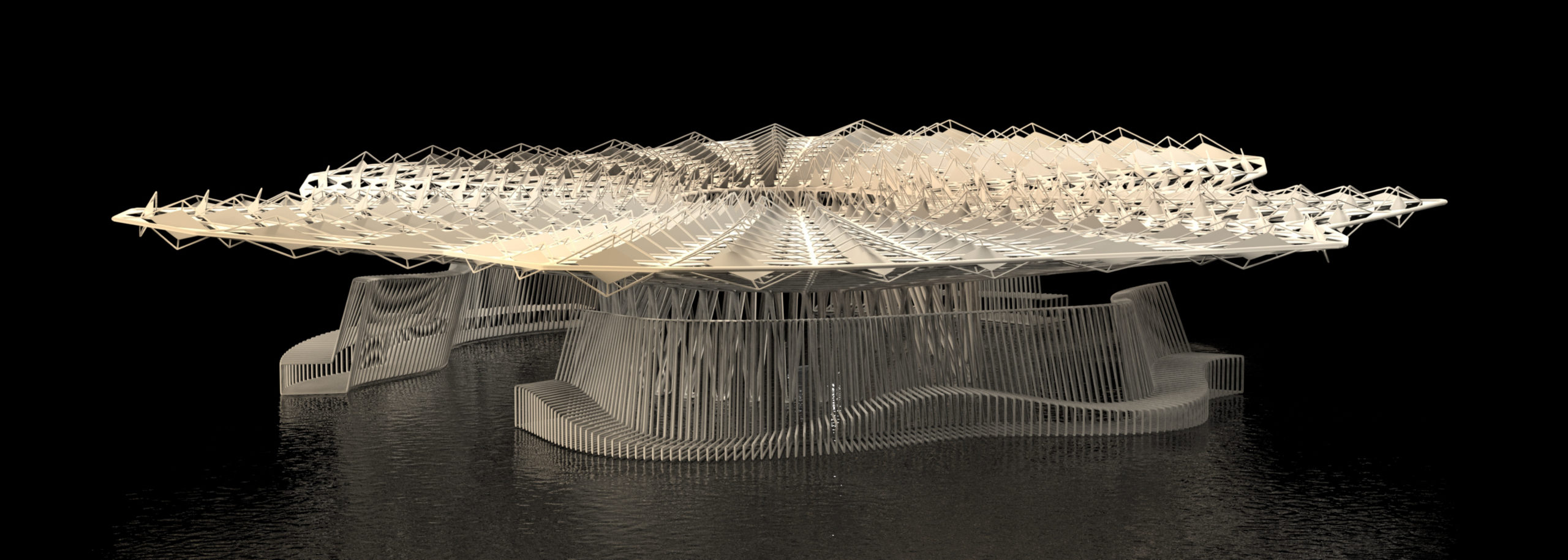
The 2017 Serpentine Pavilion by Pritzker Prize winner Francis Kéré captivates through its simple geometry that’s charged with increasing complexity at the detail level. The logic of the structure seems very much reminiscent of the concepts and processes that we got to know in this computation class. The task was to analyze and deconstruct the logic of the pavilion in order to redesign it with the implementation of our own ideas.
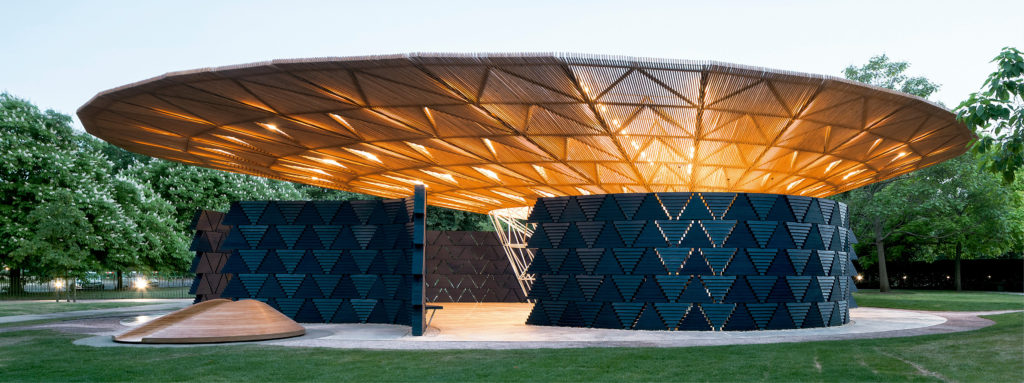
Analysis
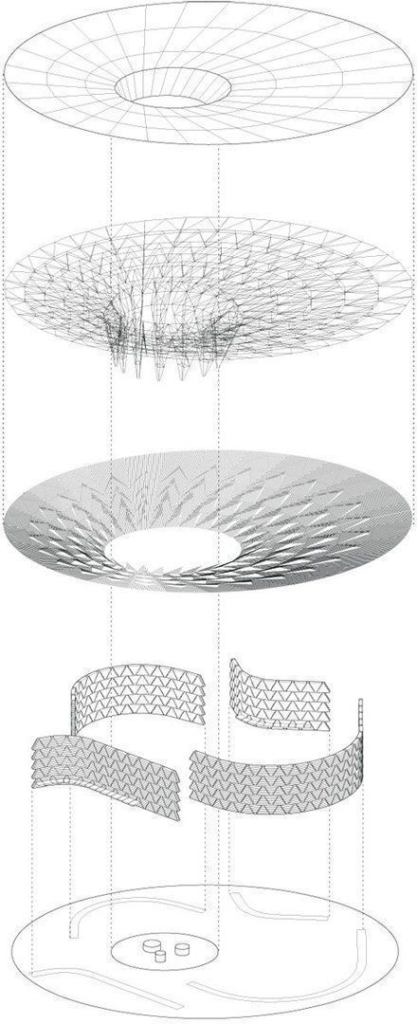
Kéré’s Pavilion deconstructs the two main parts of the classical architecture repertoire: The wall and the roof.
Separated from the roof, both physically and by distinct blue blue colour, the wall structure archetypically consists of four, but in this case individual and warped walls made from wooden parts, alternating in rotation over 5 levels, creating a lively pattern and forming at times intimate, at times very open spaces and creating visual and reference axis.
The roof structure spans between two ellipses, the smaller one lower and shifted away from the centre to create a bigger overhang to one side. This base structure is offset with a gradual decrease to the outline where the upper and lower beams meet to form a sharp roofline. The same happens on the inside where the beams of the u directions of the surface anchor the roof to the ground.
The roof is decked with shadow providing wooden batten on the lower roof structure, with some, in the shape of triangles, reaching the higher structure to create openings for light to pass through to the inside.
Inspiration
The work of Bryan Garcia both in terms of graphical and structural aesthetics inspired our process. The delicateness in his projects in combination with repetitive patterns very much reminded us of Kéré’s roof structure. In addition to the all-directional logic of the pavilion we implemented direction specificity, domain restricted and gradually flowing value mutations to the script, as found in some of Garcia’s work. The combination of hard edges, sharp angles and occasional spikes provides a stark contrast with the smooth rotational repetitiveness and transitional orientation changes. This contrast is discovered again in the materiality, where the wooden elements are set against a background void, often on a colourless water surface. This way presented, like the skeletal remains of a – thought to be – long extinct aquatic creature in a remote corner of the local natural history museum, the composition mystifies the project but at the same time emphasises the intricacy and elegant ornateness. In our own renderings we picture the features of our interpretation with similar aesthetic accentuation.

Pseudocode diagram
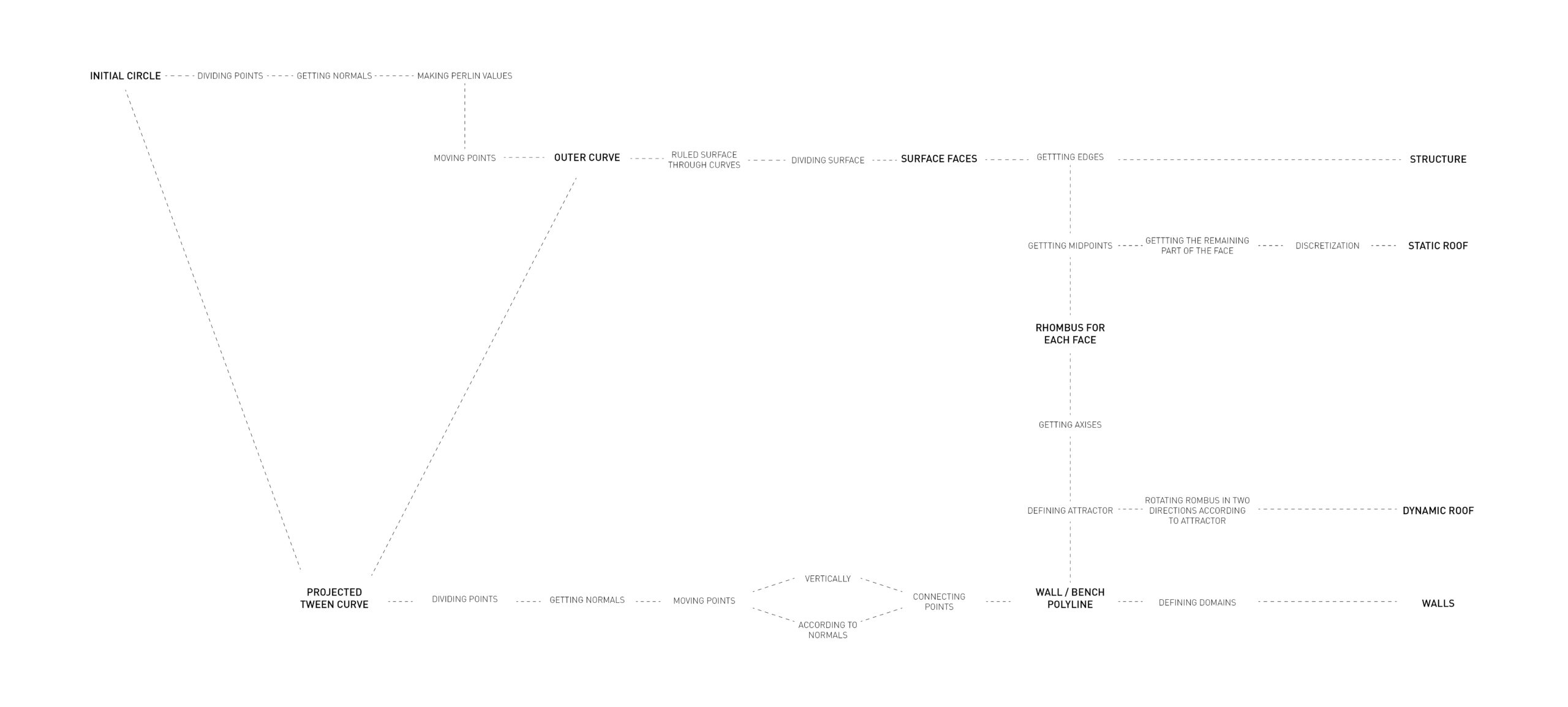

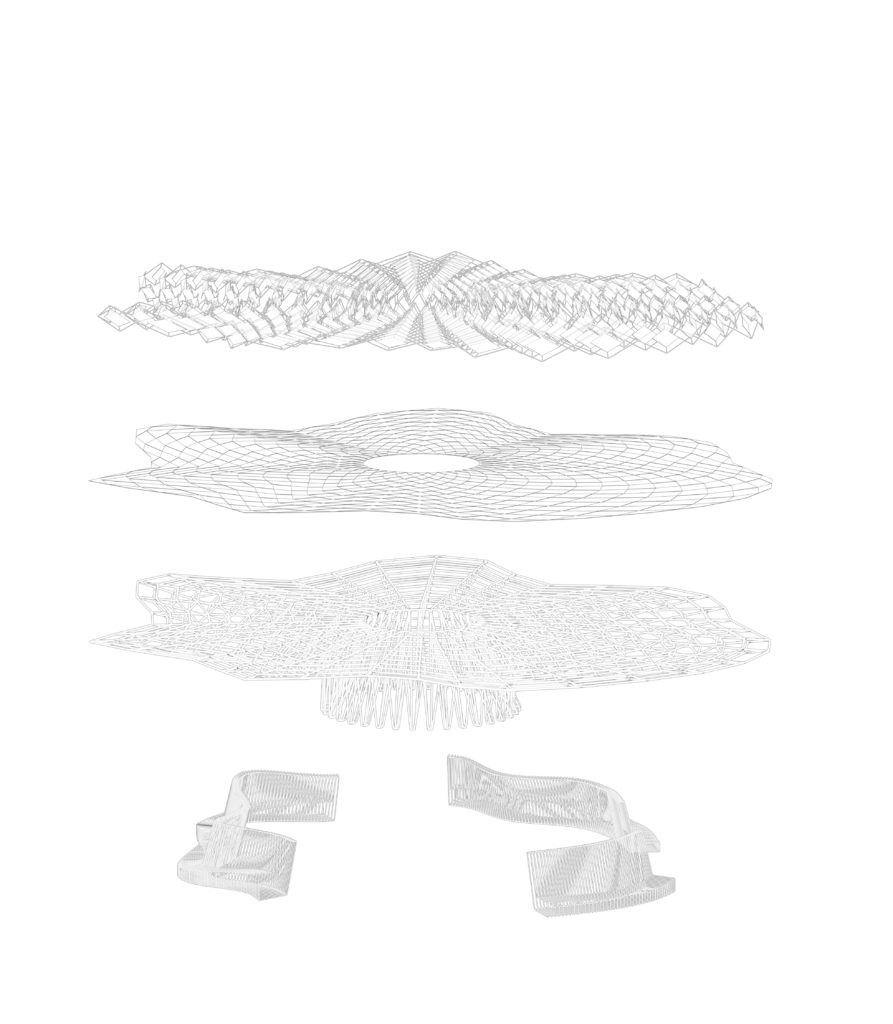
The deconstruction of our redesigned pavilion shows the backbone logic it shares with the original.
The wall, with a constant distance from the overarching roof, consists of a series of frames that gradually change with the help of a perlin noise function to provide seating at different height levels.
The underlying roof frame follows the original’s two-layer structure but creates a new, more complex logic on the individual layer. Starting from the inside circle the division points are radially driven out at different amplitudes according to specific remapping factors to create peculiar transforming surface whose u- and v-divisions provide the base for the structure and the above roof part.
The roof divides the cells at the middle of the beams into rhombi, that are rotatable in along their diagonal axes, in order to orient to outside factors.

